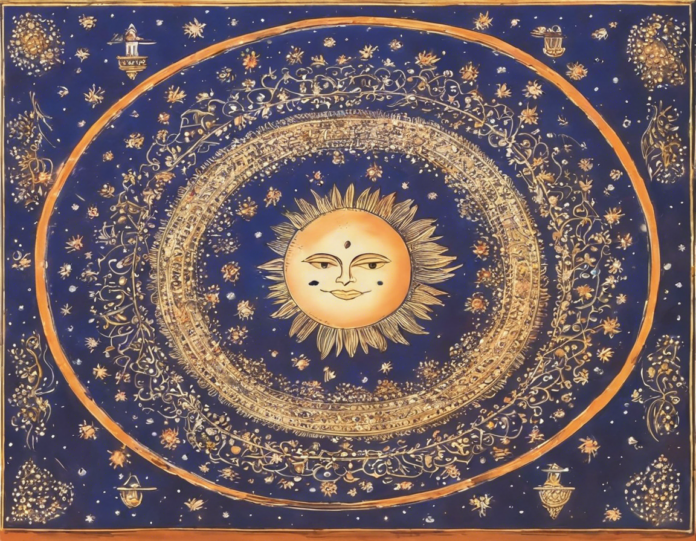Introduction:
In a world filled with breathtaking natural wonders, few experiences can match the serene beauty and mystical allure of moonrise. The moment when the moon begins its ascent over the horizon has captivated poets, artists, and stargazers for centuries. Whether you seek a romantic evening under the silvery glow of the moon or wish to capture its ethereal beauty with a camera, knowing the best time for moonrise can make all the difference in your experience.
Understanding Moon Rise:
Before delving into the best times for moonrise, it’s essential to understand the astronomical phenomenon behind it. Moonrise refers to the time when the moon appears above the eastern horizon as seen from the Earth’s surface. This daily occurrence is caused by the moon’s orbit around the Earth, during which it rises and sets much like the sun.
The moon takes approximately 27.3 days to complete one orbit around the Earth, during which it goes through distinct phases, from new moon to full moon and back again. The timing of moonrise varies each day, influenced by the moon’s position in its orbit and the Earth’s rotation.
Best Times for Moon Rise:
- Full Moon:
-
The most iconic phase of the moon, the full moon is a sight to behold during moonrise. When the moon is full, it rises around sunset and sets around sunrise, making it visible throughout the night. For captivating moonrise views, head outdoors shortly before sunset to witness the moon’s majestic ascent.
-
New Moon:
-
While the new moon is often associated with darkness, its moonrise can be equally captivating. During this phase, the moon rises with the sun and sets shortly after, appearing as a slender crescent in the sky. Catching the new moonrise requires keen observation, as it may be faint against the bright backdrop of the sunset.
-
First Quarter Moon:
-
As the moon transitions from new moon to full moon, it reaches its first quarter phase. The first quarter moon rises around noon and sets around midnight, making it visible in the afternoon and evening sky. This phase offers a unique opportunity to witness the moonrise in broad daylight, against the backdrop of a bright blue sky.
-
Third Quarter Moon:
- The third quarter moon occurs when the moon is three-quarters illuminated and rises around midnight, setting around noon. While its moonrise may be less noticeable than the full moon, the third quarter moon offers a stunning display as it climbs the night sky in the early hours of the morning.
Factors Influencing Moon Rise:
Several factors can influence the timing and visibility of moonrise, affecting the best times to witness this celestial event:
-
Latitude: The closer you are to the equator, the higher the moon will rise in the sky. In contrast, at higher latitudes, the moon’s trajectory may be lower, impacting its visibility during moonrise.
-
Season: Due to the Earth’s axial tilt, the moon’s rising and setting points vary throughout the year. During certain seasons, the moon may rise more to the north or south, altering its position in the sky during moonrise.
-
Topography: Mountains, hills, and buildings can obstruct the view of the moonrise, especially if they are located to the east. Choosing a location with an unobstructed view of the horizon is essential for a clear sight of the moon as it rises.
Tips for Moonrise Viewing:
To make the most of your moonrise viewing experience, consider the following tips:
- Plan Ahead: Check online resources or smartphone apps to determine the precise time of moonrise in your location.
- Choose the Right Location: Opt for a vantage point with a clear view of the eastern horizon to witness the moonrise unobstructed.
- Bring a Camera: Capture the beauty of the moonrise with a camera or smartphone to preserve the moment for years to come.
- Stay Patient: Sometimes, atmospheric conditions or natural obstacles may delay or obscure the moonrise. Stay patient and wait for the moon to make its appearance.
Frequently Asked Questions (FAQs):
- What is the difference between moonrise and sunrise?
-
Moonrise refers to the time when the moon ascends above the horizon, while sunrise marks the appearance of the sun in the east.
-
Can I see the moonrise during the day?
-
Yes, depending on the moon’s phase, you may witness a daylight moonrise, especially during the first quarter and third quarter phases.
-
Do different moon phases affect the timing of moonrise?
-
Yes, the timing of moonrise varies throughout the lunar cycle, with the full moon rising around sunset and the new moon rising with the sun.
-
How can I calculate the exact time of moonrise in my location?
-
Various online tools and apps, such as astronomical calendars and moon phase trackers, can provide you with the precise time of moonrise based on your location.
-
Are there cultural or spiritual significance associated with moonrise?
- Moonrise holds cultural and spiritual significance in many societies, symbolizing renewal, fertility, and the cycle of life and death.
In conclusion, moonrise is a mesmerizing natural spectacle that offers a moment of tranquility and wonder in the midst of our bustling world. By understanding the best times for moonrise, appreciating the factors that influence it, and following practical tips for viewing, you can enhance your experience of this celestial phenomenon and create lasting memories under the mystical glow of the moon.










